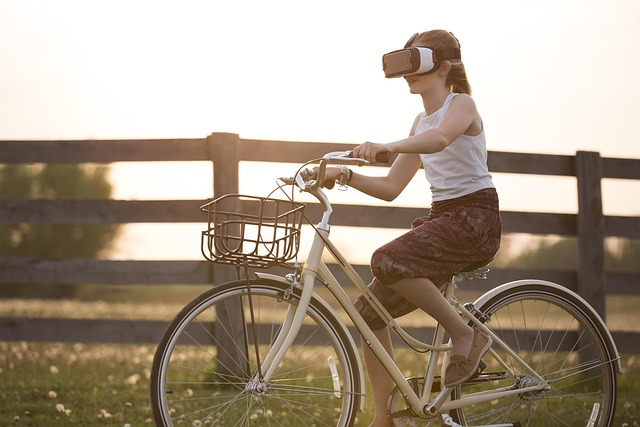Introduction: A Shift in How We Interact With Content
Augmented Reality (AR) in media isn’t just about flashy filters or digital gimmicks. At its core, AR adds a layer of interactivity on top of what we watch or read. It blends physical and digital, making the viewer part of the scene rather than just an observer. In a standard video, you’re watching something happen. In AR-powered media, you’re touching it, reshaping it, even influencing it in real time.
This shift turns audiences from passive viewers into active participants. Instead of sitting back, people are leaning in—moving their phones to reveal hidden content, tapping prompts for more info, or physically interacting with characters in their own living space. That level of hands-on engagement is a game-changer.
Why this matters: attention is fractured and time is limited. AR pulls people deeper, holds their focus longer, and adds layers of meaning standard formats can’t touch. It’s not just tech for tech’s sake—it’s about making stories, ads, and experiences unforgettable. In a media landscape oversaturated with content, AR isn’t a gimmick. It’s a reset button on how we consume.
The Current State of AR in Media
Augmented reality is no longer some future tech buzzword. It’s already stitched into how media gets made, shared, and consumed. The most visible entry point? Filters. Whether on Instagram Stories or TikTok, creators and brands have turned AR overlays into a language. These days, it’s not just dog ears or retro VHS effects—interactive elements now react to the user, shift with camera movement, and even trigger based on voice commands.
Then come the interactive ads. Think makeup tutorials where you can try the lipstick on your face mid-video. Or pop-up narratives in journalism, where a news anchor gestures to a holographic crime scene that expands around them. These aren’t gimmicks—they’re frictionless ways of giving depth without losing pace.
Major media players have taken the hint. Broadcasters are layering AR graphics into live sports coverage. Streaming giants are testing behind-the-scenes AR content overlays—tap your screen during a show and see costume concept art or director’s notes. Some news outlets are even adapting AR to explain complex stories visually, turning static headlines into immersive infographics.
And no, it’s not just about phones anymore. The shift to spatial media is underway. AR glasses are finally becoming viable for early adopters, while smart TVs and connected home devices are being built with sensors that support augmented overlays. Expect to see more households where you can scan a news report from your living room wall or follow a cooking tutorial projected onto your kitchen counter.
AR isn’t waiting for the future—it’s already baked into how we engage with media now. The tools are here. The audience is ready.
Content Becomes a Two-Way Street
AR is turning passive media into something far more personal. Viewers aren’t just watching—they’re choosing, shaping, and reacting in real time. The line between audience and creator is getting blurry, and that’s by design.
Think sports replays with customizable angles and layouts—fans picking their player focus or switching camera perspectives mid-play. Picture live concerts where phone screens bring digital effects to life, synced in real time with the music. Or dynamic news updates where users scroll through augmented layers of data, timelines, and on-the-ground footage without leaving their living rooms.
The shift goes beyond gimmicks. AR-driven content is outperforming traditional video on key metrics: longer time-on-platform, higher click-through rates, stronger post-view recall. People aren’t just consuming—they’re hooked. For creators and media producers, that’s a signal: interactive is no longer optional. It’s the new baseline.
The Numbers Don’t Lie
The data tells a clear story: when AR gets integrated into content, people stick around longer. AR-enhanced media sees higher user retention rates—viewers are turning into repeat visitors, not just one-and-done lurkers. Instead of passively watching, users explore, click, ask, and interact. They’re leaning forward, not kicking back.
Branded AR campaigns are also punching above their weight in engagement metrics. Whether it’s a virtual try-on, interactive world-building, or custom overlays that respond to user gestures, AR-connected content sparks curiosity and delivers staying power. Brands are seeing longer session times and better recall. For creators and marketers, those are hard numbers that justify building beyond flat video.
And what’s really changing the game: audience expectations. Linear, one-size-fits-all media doesn’t cut it anymore. Viewers now expect content to do something—respond, adapt, unfold. AR’s not just a bonus feature. It’s quickly becoming the baseline. The bar has moved. Those who ignore it risk falling behind.
AR and Storytelling: A New Language
Augmented Reality isn’t just changing how we consume media—it’s transforming how stories are told. With the addition of visual depth, contextual layers, and interactive cues, creators now have an expanded toolkit to engage audiences on a more immersive level.
Beyond the Flat Screen
Traditional storytelling relied on fixed frames and linear timelines. AR introduces a spatial dimension, allowing viewers to experience narratives in their environment.
- Visual layering: Overlay graphics, characters, or information that interact with real-world surroundings
- Emotional immersion: Proximity-based interactions and 3D visuals evoke deeper emotional responses
- Spatial storytelling: Audiences walk through scenes, explore different angles, or uncover hidden layers of plot
Evolving the Classics
Content creators are starting to reimagine established formats—from news and education to fiction and film—for AR-enabled environments.
- News updates: Interactive headlines with visual data overlays and location-aware reporting
- Historical documentaries: Walkthroughs of recreated past events, contextualized with AR artifacts
- Fiction formats: Traditional narratives gain interactivity through user-driven perspectives or physical space integration
New Genres on the Rise
As AR technology matures, entirely new formats and genres are emerging. These aren’t just technical upgrades to old models—they’re redefinitions.
- AR Documentaries: Real-world environments blended with 3D data, making stories both informative and exploratory
- Mixed-Reality Dramas: Viewers move between digital overlays and real settings, influencing character decisions and outcomes
- Interactive Educational Series: Layered experiences that guide users through content by emotion, choice, or behavior
In short, AR is rewriting the language of storytelling. The medium is no longer just the message—it’s the landscape, the emotion, and the interaction all at once.
Challenges Still Standing
As much as AR is reshaping media, it’s not all smooth sailing. Development costs remain a major roadblock. Creating well-executed AR experiences doesn’t come cheap—it demands specialized skills in 3D modeling, motion tracking, and software engineering. That means only bigger media players or well-funded creators can dive in at scale, leaving smaller outfits playing catch-up or opting out entirely.
Then there’s the accessibility issue. Not all devices are built for AR. While platforms are optimizing for mobile cameras and newer smartphones, a significant chunk of users still run on older hardware or in environments where AR just doesn’t perform well. That gap limits audience reach and forces creators to make trade-offs between ambition and access.
And let’s not ignore the fatigue factor. As cool as AR is, there’s a fine line between innovation and overload. When every piece of content demands interaction, users get tired fast. The novelty wears off. This creates a real tension—keep pushing the edge without overwhelming the person on the other end of the screen. Smart creators are learning to pick their moments. AR works best when it surprises, not when it becomes expected.
Industry Shake-Up: Streaming vs. Cable in an AR World
Cable had a long run—but its grip is slipping fast. Streaming already outpaced it by offering on-demand, anywhere-anytime viewing. Now, AR is pushing that edge even further. Instead of just watching, viewers interact. Think Netflix episodes with embedded AR side plots. Think Hulu creating augmented scavenger hunts tied to new shows. This isn’t fluff—it’s a fundamental shift in how audiences engage with content.
Traditional media can’t keep up. Its structure is too rigid, too passive. Meanwhile, streaming services are using AR to carve deeper user experiences and gather better data. Every gesture tracked, every lens switch counted. That feedback loop helps platforms refine future content in near real-time—and that’s the competitive advantage legacy networks can’t match.
The savviest streaming players are making AR part of their brand identity. Not as a feature, but as a core layer. For viewers, that means more control. For platforms, it locks in loyalty. Because once a user gets used to bending the story around them, plain old watching feels dull.
More on this evolution here: Streaming Services vs. Cable: The Battle for Viewership
The Road Ahead
Augmented Reality is already shaking up how we experience content—but the real breakpoint is when AR teams up with AI. Together, they’re creating media that reacts to the viewer. Think: content that changes based on your location, preferences, even your mood. An interactive news segment that adjusts depending on what you’ve watched recently. A fitness coach in AR that adapts in real time. We’re not just talking about cool effects. We’re talking about a shift in how stories behave.
For brands and media creators, this means the bar is higher. Before investing, you need a strategy that balances technical ambition with user value. Start with the basics: Who is your audience? What devices are they using? Are you enhancing the story or complicating it? When AR and AI are used just to show off, people bounce. But when they serve the narrative, they deepen engagement.
The takeaway isn’t that AR is replacing traditional media. It’s not. It’s expanding the canvas. These tools open up space for more precision, more relevance, more connection. That’s the power play.


 Susane Privetterry is a tech author at mediatrailspot known for her insightful writing on AI, digital tools, and modern technology trends. She simplifies complex topics, making them accessible and engaging for readers of all levels.
Susane Privetterry is a tech author at mediatrailspot known for her insightful writing on AI, digital tools, and modern technology trends. She simplifies complex topics, making them accessible and engaging for readers of all levels.

